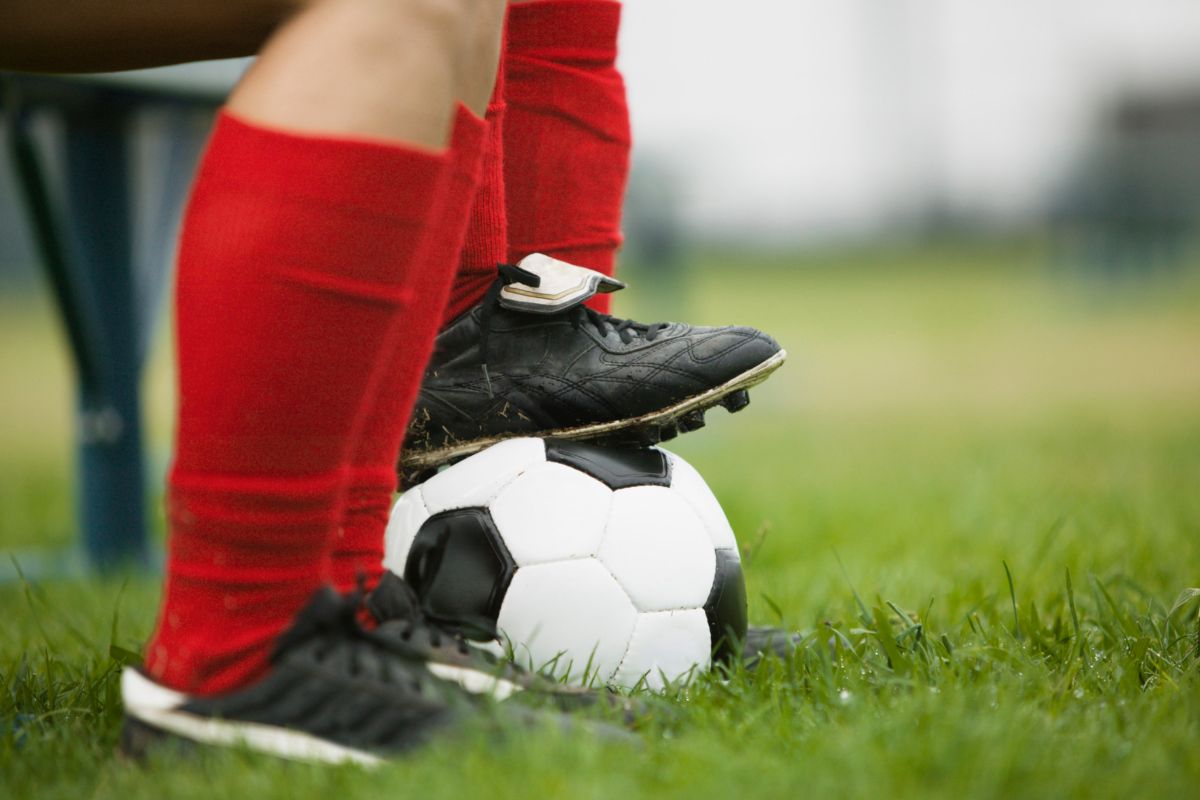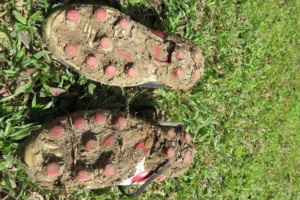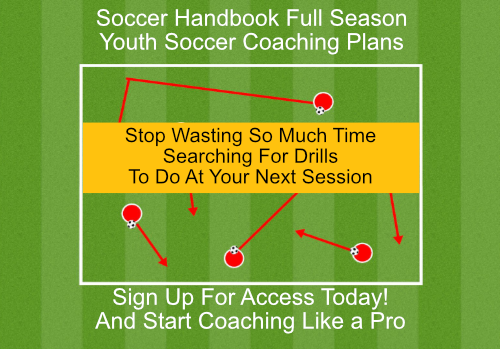When you first buy a new pair of soccer cleats, they can be so uncomfortable that they’ll actually hinder your performance if you use them for a competitive game. And hurt your feet!
This can be particularly painful if you have wide feet. Soccer cleats are pretty different from a regular pair of sneakers, running shoes, or hiking boots. That’s why it’s essential to break them in properly before you even think about using them in a real match.
Even if you followed our Soccer Cleats Guide when buying your shoes, they will still require their own special treatment to make sure they work properly in the match. This is our simple guide to breaking in soccer cleats, the right way.
Step 1: Make Sure You Have The Right Size
This is a pretty easy step, but breaking in your cleats will be a complete waste of time if they don’t fit properly in the first place. That’s why you should always triple-check that your cleats are the appropriate size for your feet, especially before you splash out on an expensive pair.
The best way to go about doing this is to try the cleats on in person, rather than buying online. Of course, you can still buy cleats online. Just make sure you stick to whatever sizing guide is provided by the manufacturer. Also, check out our guide for sizing soccer cleats.
If you are an Amazon Prime member you should take advantage of their Try Before You Buy service. That way you can try them on a home, just like you were in a physical store, and then send back what doesn’t fit.
When you do get a chance to try the cleats on, make sure you wear your soccer socks, rather than your regular socks. Some soccer socks could add a surprising amount of thickness to your foot so it should definitely be considered when thinking about the right size. Once you’re positive you have the right size for your feet, you can shop around for a style that suits you.
Step 2: Petroleum Jelly
Yes, you did read that right! The next step in the process is to use petroleum jelly on your new cleats. Something like Vaseline is all you really need to do this so don’t bother with specially-designed jelly for breaking in shoes. These are just a waste of money.
The main issue with breaking in any new pair of shoes is that the leather rubs against your feet, which can cause painful blisters and sores. If you rub a thin layer of petroleum jelly all over the inside of your soccer cleats while you wear them around for a while, it will create a slippery barrier between your feet and the leather material.
It might seem like a bad idea to rub something like Vaseline all over the inside of a brand new pair of soccer cleats, particularly if they’re expensive. However, you’ll have to trust us when we tell you that it’s easy to clean off once they’re broken in and it won’t do any lasting damage.
Step 3: Loosen The Laces
It’s common sense to think that, the first few times you wear your new soccer cleats while breaking them, you should wear them normally. However, it’s actually much more comfortable and effective to wear them with the laces tied loosely at first.
This allows the main area of the cleats (the part that wraps around your feet) to adjust to the shape of your feet naturally, rather than being forced by tight laces.
You should be wearing your cleats at some point every day for a few days, so tighten the laces gradually each day until they are tied normally. Not only will this help you avoid getting blisters while breaking your cleats in, but it will also help your cleats fit much better by the end of the process.
Step 4: Wear The Cleats For Three Days
The second-to-last step in the process is pretty straightforward and it’s the same thing you would do to break in any pair of shoes.
For three consecutive days, try to wear your cleats for at least three hours. Preferably, you should wear the cleats for as long as possible each day, though not if it gets too uncomfortable.
You don’t have to do any kind of soccer-related activities while wearing them for the first three days. Simply go about your business, doing household chores or maybe some work in your backyard while wearing the cleats.
However, if your cleats have metal-tipped studs, it will be a lot more difficult to walk on hard surfaces like concrete. In fact, you should avoid walking on concrete or asphalt surfaces altogether because it can wear the studs down, making them less effective on the field. Also, don’t wear them inside. If you have wood floors this could be particularly bad.
Step 5: Use Your Cleats For Soccer

The only thing left to do to completely break in your new soccer cleats is to try them out on the field. You won’t want to wear them for a competitive game yet, though. Instead, try them out in a training session with your team or simply on your own in your backyard.
You’ll also want to make sure you take it slow at first. Start off with some light warm-up exercises and shuttle runs. This way, you’ll notice straight away if the shoes aren’t loosened up yet and you can avoid a lot of discomfort later on. Also, be sure to bring a spare old pair of shoes in case the new pair get uncomfortable or painful.
Other Tips For How To Break In Soccer Cleats
If you’ve followed all of the steps we’ve outlined in this guide and your cleats still don’t feel right, here are a few more things you can do to get closer to that perfect fit:
Use Insoles
Some of the old-school soccer players might tell you that insoles will ruin your game and leave you unable to pull off proper soccer techniques but this definitely isn’t the case. Insoles can also help you break into your cleats much more easily.
Some cleats come with removable insoles. You could try using the insoles from your previous pair until the show is properly broken in.
Alternatives To Petroleum Jelly
Petroleum jelly is one of the best-kept secrets to helping break in soccer cleats. However, if you can’t get your hands on any, you can always rub a stick of deodorant on the inside of the cleats to have the same effect.
Soaking Your Cleats
This might seem like a pretty strange tip but it does actually work! As long as you have leather soccer cleats, you can wear them in the shower or dunk them in a bucket of warm water to loosen the stitching and the leather panels and help mold them to the shape of your feet more easily.
It’s worth mentioning that you should never do this with synthetic soccer cleats. It’s only leather that reacts this way to being soaked in warm water and you might end up ruining your synthetic soccer cleats if you wear them in the shower.
Final Thoughts For Breaking In Soccer Cleats
As long as you follow the steps we’ve outlined in this guide, you should have no problems breaking in your new soccer cleats. Remember that there’s no simple solution to getting them to fit in a single day.
It takes some time and patience to get it just right. If you are patient, though, you’ll be rewarded with cleats that feel like clouds on your feet!



